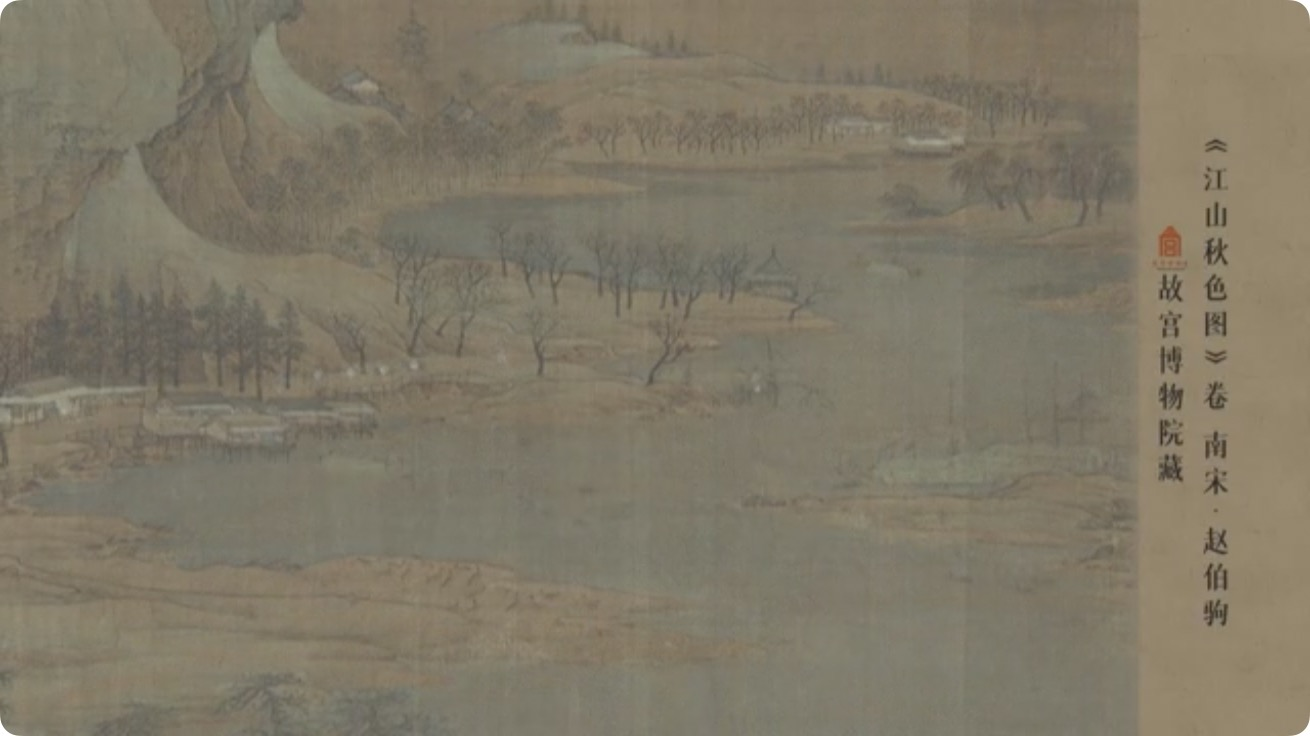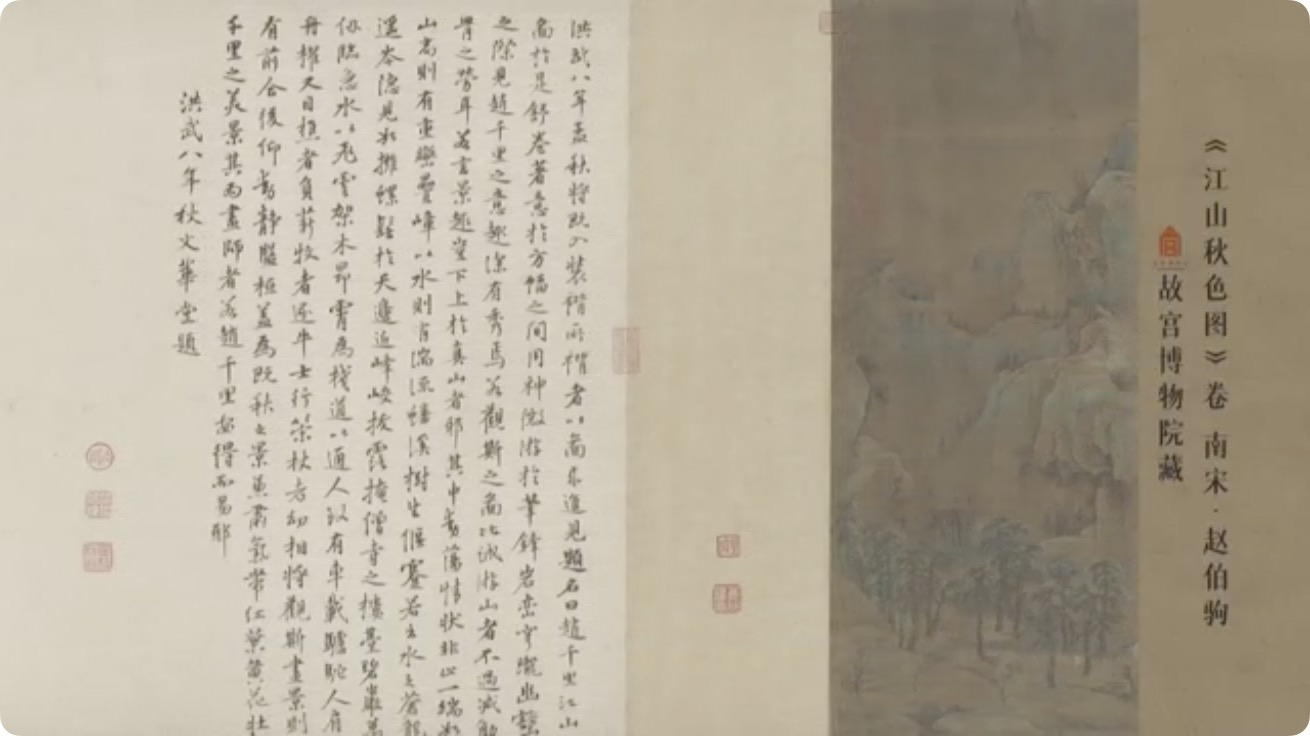Landscape paintings have a special place in the history of Chinese art. Their content is richer than those artistic renderings of people and birds, and they can convey ideas about time and space, the cosmos, and even the life and values of the Chinese people. "Autumn Colors on Mountains and Rivers," by Zhao Boju from the Song Dynasty (960-1279), ranks among the masterpieces of ancient Chinese turquoise landscape painting. It is currently on display at the Hong Kong Palace Museum.
06:11

The painting was lauded by Xu Bangda, a connoisseur of ancient paintings and calligraphy, as "a masterpiece of the Northern Song Dynasty (960-1127) style." This work shows the beauty of northern China's landscapes. The scroll starts with a long and winding river in the foreground, while a sublime mountain range full of staggered ridges and peaks coils along in the rear part. In addition to the beautiful natural scenery, the painting depicts temples, halls, water pavilions, and other buildings. Meanwhile, a closer look at the mountains reveals several amblers and other passers-by stopping to rest and chat under the shade of pine trees. Amid the still turquoise landscape, an almost animated sense of the hustle and bustle seeps through.
As representatives of the pinnacle of landscape painting during the Song Dynasty, "Autumn Colors on Mountains and Rivers" and "A Panorama of Rivers and Mountains" by painter Wang Ximeng have certain similarities. However, they also retain their unique characteristics.
By comparison, Zhao's work is full of peaks and rocks. Unlike Wang's heavier and more subdued style and use of color, Zhao's piece is more thinly colored, with a lighter use of "stone colors" such as azurite or mineral green. The overall coloration is not as rich or bright as in Wang's work, but the style of the painting as a whole appears novel and elegant, and varied. This way of painting cleverly preserves the characteristics of landscape painting while adding literati elements reflected in its use of ink, which adds depth to the painting's ideological connotations.

Details of "Autumn Colors on Mountains and Rivers," a painting by Zhao Boju. /CGTN
Details of "Autumn Colors on Mountains and Rivers," a painting by Zhao Boju. /CGTN
Zhao Boju was born to a royal family during the Song Dynasty. He was the grandson of the seventh generation of the Emperor Taizu, founder of the Song Dynasty. Zhao's father, Zhao Linglang, was skilled at painting small scenes and was an enthusiastic collector of ancient paintings. Growing up in this kind of artistic environment helped hone Zhao's artistic talent and knowledge, laying a solid foundation for his future development as a painter. His masterpiece, "Autumn Colors on Mountains and Rivers," was created during the Northern Song Dynasty.
At that time, painters were trying to cater to the ruler's whims by developing turquoise landscape paintings and combining these techniques with those derived from ink paintings. This long scroll painting by Zhao is representative of turquoise landscape painting classics, showing the richness and fullness of nature.

"Autumn Colors on Mountains and Rivers," with its preface and postscript. /CGTN
"Autumn Colors on Mountains and Rivers," with its preface and postscript. /CGTN
According to Professor Kang Zhen from Beijing Normal University, the great mountains and waterways of the Song Dynasty led people to believe that the masterpieces of landscape painting were essentially poetic in nature. "Autumn Colors on Mountains and Rivers" highlights the ideals of the literati and has often been compared to a work of poetry. The artist certainly had famous verses in his heart while wielding his brush, just as many poets at the time had certain paintings in their hearts and minds when they penned their lines. This mental framing of "painting is silent poetry, and poetry is the audible form of painting" adds endless charm to the turquoise landscape paintings of the Song Dynasty.